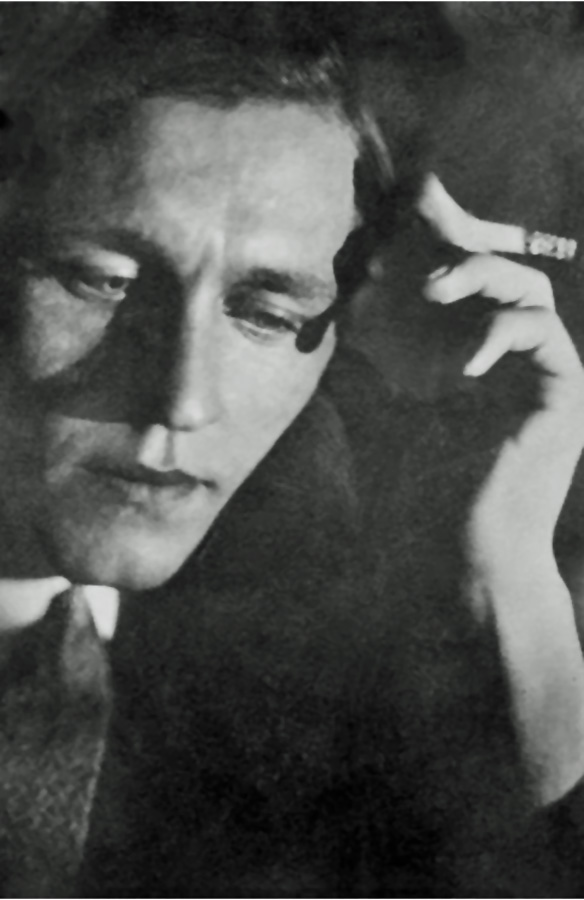
Steffen Thomas: Discovery and Rediscovery
Note: This essay by Anthony F. Janson is from the book, Steffen Thomas Rediscovered, published by the Ogden Museum of Southern Art (2014)
This book and the companion exhibit are the products of like-minded people bound by mutual respect and liking for each other and, above all, a shared appreciation for the work of Steffen Thomas. The pleasure of such an agreeable association alone would have been worth the effort. Unlike my colleagues Andrew and Hathia Hayes and Alan Aiches, however, I never met the artist. This is both an advantage and a disadvantage. In one sense, it was an asset, for I was not overwhelmed by Thomas’s substantial personality, and could look at his work without personal prejudice — though I hasten to add, this did not mean suspending my aesthetic judgment, which is no less personal. I therefore set out to select the finest objects out of a huge body of work numbering in the several thousands. These would, I hoped, define the essence of the artist and his contribution. It is not a “balanced” survey or retrospective. In fact, there are several aspects of his career that are hardly touched on, notably, prints, drawings, allegorical work from philosophy and literature, among others, which he produced in considerable numbers.
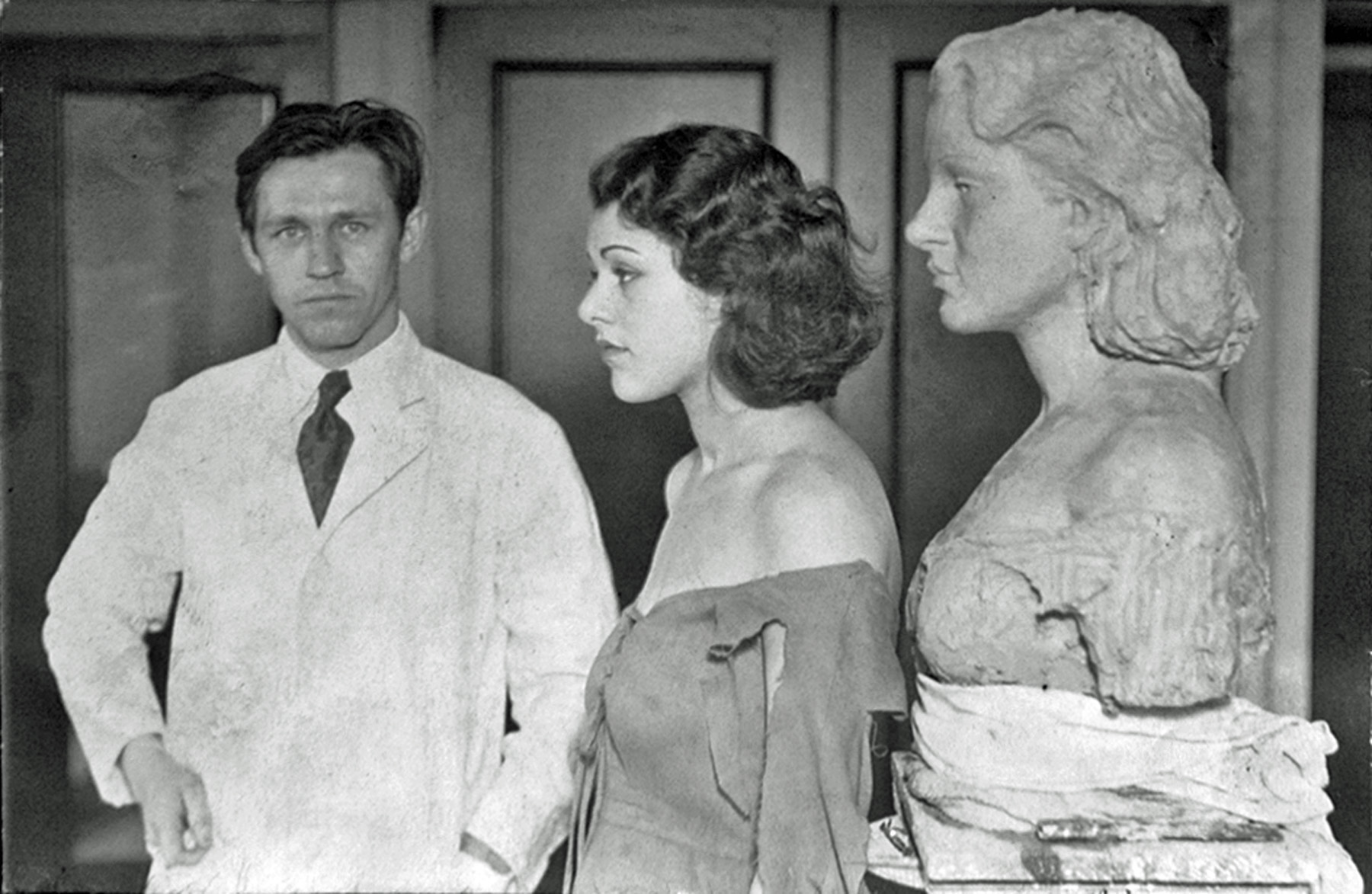
On the debit side, I am fully aware that the selection is therefore, in one sense, arbitrary. As such, it does violence to both the man and his art, precisely because there is so much I could not possibly know without having met him. Art historians deal with this dilemma all the time, but it is alien to the curator and critic of modern art, who necessarily rely on close contact with artists whenever possible. The picture I know of Thomas as artist is thus an historical interpretation, and like all attempts of its kind, partly and necessarily fictive and does not represent personal insights gained from direct contact with him.
Thomas is not an easy artist to categorize. His date of birth — 1906 — places him between the two main generations who defined German art during the first part of the twentieth century. Moreover, he immigrated to this country well in advance of most other German artists, who came to escape Nazism in the 1930s. Thus, he is neither typically German, nor distinctively American, but rather a cosmopolitan figure whose work would have looked comfortable in a Paris gallery. He nevertheless belongs among a lost generation of German-American artists who achieved considerable reputations in their time, only to have disappeared from the artistic consciousness of today. These included Werner Drewes and Karl Zerbe, both of whom were friends of my parents. Their neglect is unjust but perhaps inevitable in a rapidly changing world obsessed with newness. This exhibition and book seek to redress the balance.
Thomas’s vision was defined even before he came to the United States. Though treated virtually as a throw-away, an early bronze head already shows all the essential characteristics of what I call his “muses”: the idealized women who populate his work throughout his career and form its core. The resemblance to Sara (whom he had not yet met when he executed this model) is striking. The muses are allied to the classical tradition stretching back to ancient Greece, without being specifically classical in appearance. On the contrary, they have a rounded softness suggestive of Matisse, but with an abstractness that arose from Thomas’s youthful Cubist experiments. We meet them again and again, these muses. In their many guises they express an ideal not simply of femininity but of humanity as a whole. Only occasionally are they overtly erotic, and when they are, it is because of some external event that disturbed his vision. Sometimes they are jaunty, even witty, without being merely chic the way fashionable society artists would paint them. The ideal developed with impressive consistency over the entire body of work. Sometimes it is conveyed through the choice of subject itself, which often centers on motherhood and family, but for the most part it is communicated through pose and expression. These can be difficult to read as such, since their content is anything but obvious. They nevertheless manage to transmit Thomas’s intent with admirable clarity.
Thomas’s work is highly individual. Of course, it has a playful side. Moreover, he was a keen observer of people, witness his portraits, which capture the character of each sitter remarkably well, and of the world, as the watercolors from his 1972 European trip demonstrate. But for the most part it was guided by his inner vision, so that he had little need for the live model or the real landscape.
Surveying Thomas’s work as a whole, one cannot fail to be struck by its restlessness. This was a man who was not happy unless he was making something. Hence, the vast output and the ceaseless experimentation with every available medium. It also manifested itself as a willingness to adopt aspects of different styles that were natural to him as an artist born and trained in Europe. Thus, one sometimes finds reminiscences of Picasso, Matisse, Moore, Rouault, as well as the German Expressionists and French Surrealists. Such comparisons inevitably work to his disadvantage. They also fail to do justice to Thomas, for he was anything but a derivative artist. In the first place, he could hardly have failed to be influenced by the artists who defined the early twentieth century. More to the point, it is important to understand the role of tradition, both old and new, in his work.
Thomas was a whole-hearted Expressionist, not simply in technique but by temperament. His allegiance was to its underlying approach, which provided a suitable arena for his ample personality. Style was secondary to him. Like technique, it was a means of expression, not an end in itself. For that reason, he was free to change either the style or the technique to suit the requirements of the work at hand — even if that meant reference to other artists. There is, in fact, an underlying logic, albeit an intuitive one, that dictated these choices. It was conditioned by the subject and its personal meaning, but above all by the mood of the artist as he worked on a project. There is also a consistent artist personality at work, even though his output is extremely varied. It shows an endless fascination with the possibilities to be explored in different media, whose techniques he set out to master with real virtuosity. This was, by all accounts, a counterpart to his innate curiosity. More generally, it was tied to the unfolding of his imagination, which took place in the peace of self-imposed isolation.
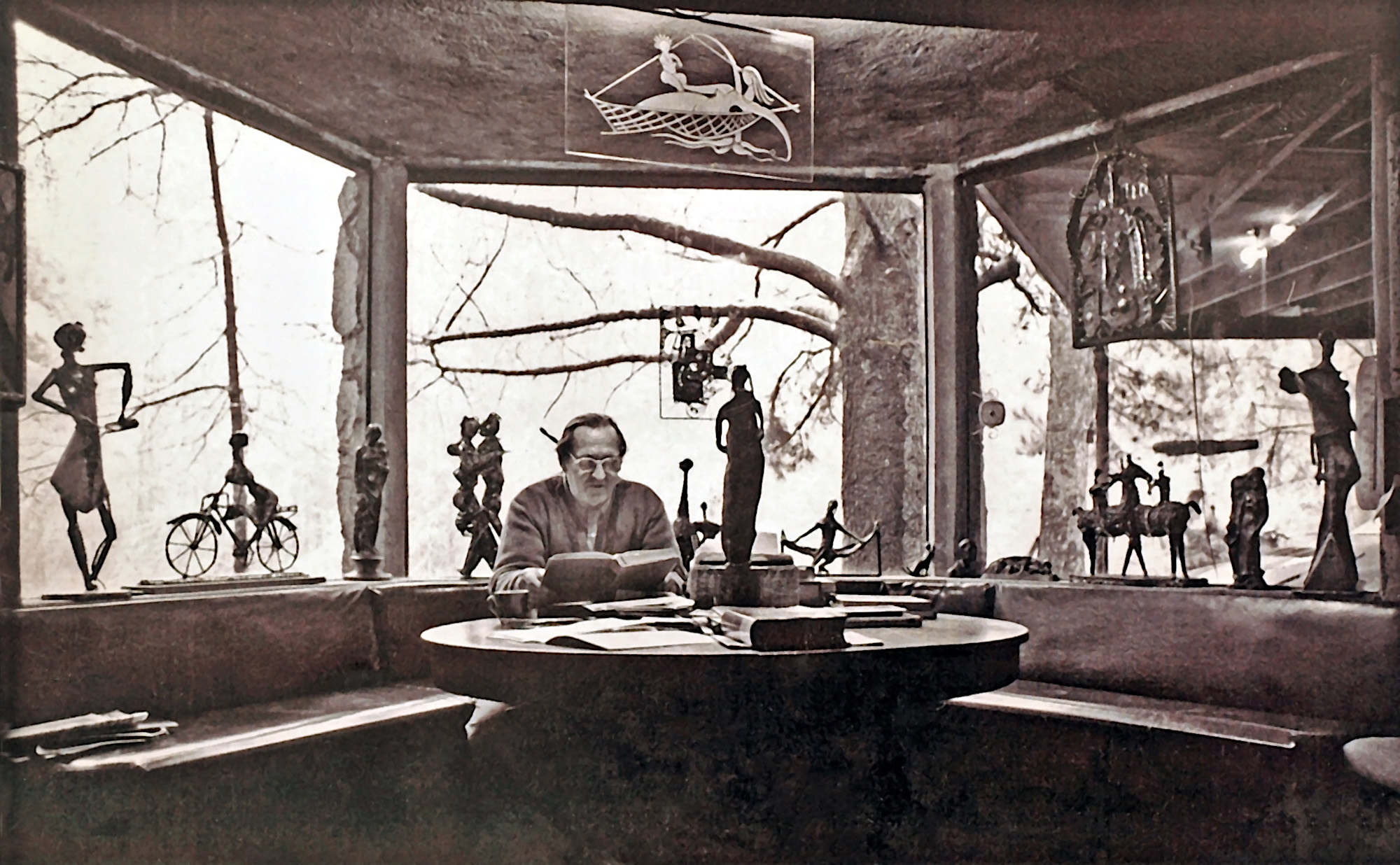
Given his personality, in fact, he could not have been anything but an Expressionist. It was the perfect vehicle for his impulsive creativity. Surrealism, with its emphasis on psychological spontaneity, complemented this approach, as against the carefully worked-out “program” we associate with classicism. Except for larger, more complex projects, primarily sculpture, he had no need or use for preliminary studies. As with all Expressionists, the results rested on a high level of inspiration — something no artist can sustain all the time. But when he was on top of his game, which was much of the time, Thomas’s successes were brilliant. He clearly understood the strengths and limitations imposed by his method in the quest for “happy accidents,” as he called them. Like a gambler, he lived for the unequaled high of a hit, and willingly sloughed off the failures as part of the game. In his case, the benefits far outweighed the risks, as the prevailing high quality of the work itself attests.
Like any artist worth his salt, Thomas believed unequivocally in the rightness of his path. This was allied to an unassailable integrity, both artistic and personal. At the same time, he was extraordinarily defensive about his work — for reasons that are readily understandable. The creative act is one of the most personal acts imaginable. It exposes one’s innermost thoughts and dreams for all to see. Having birthed one’s artistic child, having clothed and nurtured it, the artist then is forced to expose it to all the vicissitudes of an often-hostile world. In addition to the separation pangs that any “parent” must inevitably feel, the unkind fate it may meet at the hands of the art public can be extraordinarily painful. The fear of rejection leads artists, like most human beings, to develop the elaborate defenses evolved by Thomas over the years.
Thomas was by all accounts an impressive figure, with an outsized personality that commanded the attention of all around him. Late in his life, he was a barrel-chested man of medium height. Possessed of great charm and vitality, his was very much a public persona. He was, in a sense, always “on” whenever there was an audience, be it family or friends. The house became the assembly point for his coterie on many a weekend afternoon and holiday.
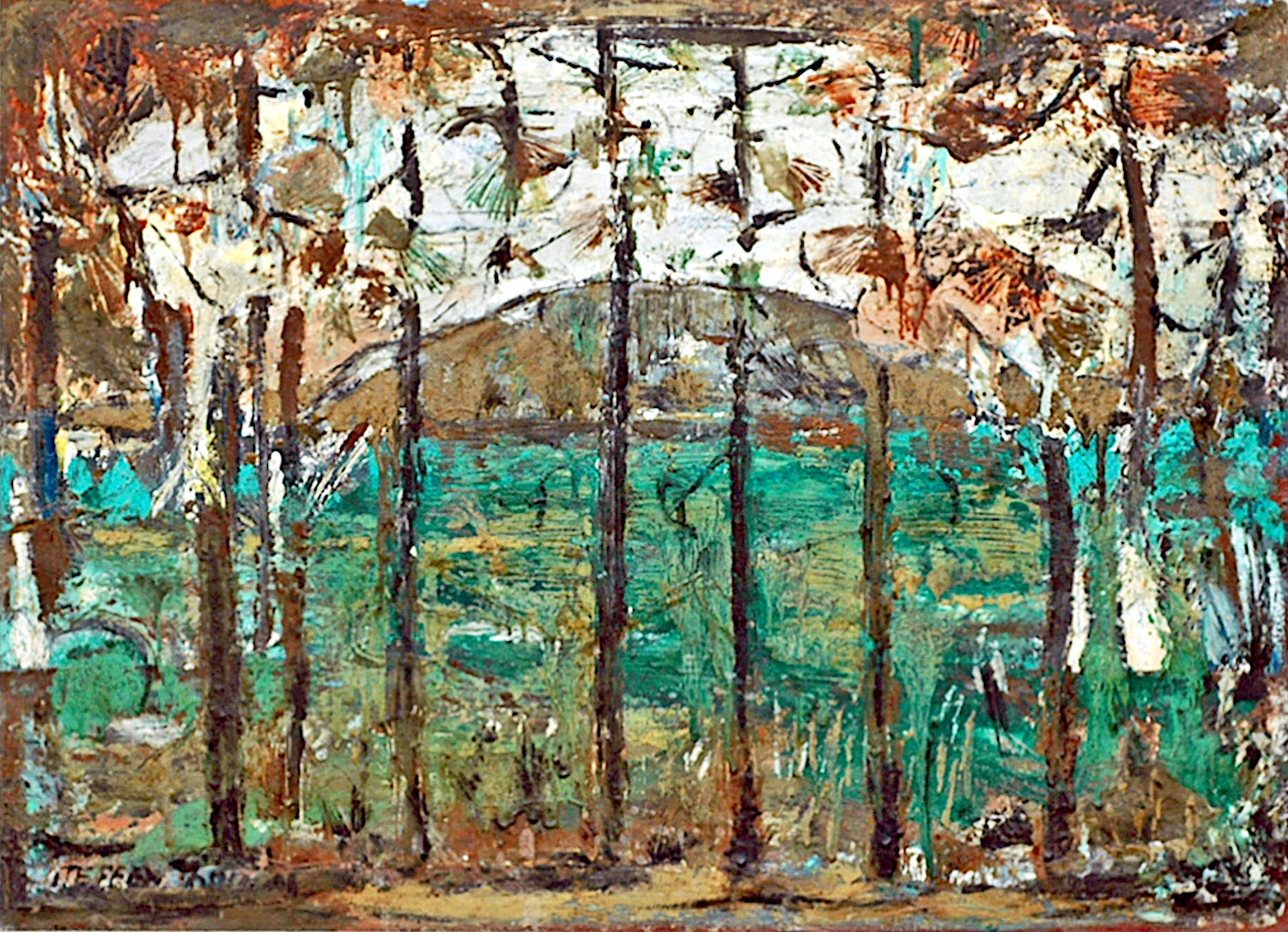
What fascinated Thomas’s friends most was his boundless creativity. He was always making something, whether it was an art object or a shed. This was more than a matter of his Germanic work ethic. Making things was life itself to him. He always said the most important thing to him was to create something every day. More than that, he was able to do anything he really wanted to in later life.
This magnificent man, so powerful, so wonderfully gifted, continued to produce art until the day before he died. Having made significant shifts in his work during the last two decades after moving to Midtown Atlanta, he focused more on works that were based in his own mind: works that came from his thinking, his reading, events of the world that he saw on TV or the media, and his experiences with his friends. His productivity rate continued, producing works at the same rapid pace that he had up to then. While his works during the 1950s through 1970s may be thought of as his most mature, this may be because few people have seen the works that he did after that time. For the most part they were smaller and more quickly produced, although he did produce important mosaics and sculptures in stone or in welding. In 1988 alone, he produced perhaps 100 works that were painted in reverse on Plexiglas using acrylic paints. These works reflected his continuing experimental nature, even though he had done reverse paintings on glass many years earlier. They ranged in success, as might be expected for any set of works of the size done in a very short period of time. Nevertheless, among them are some impressive “happy accidents.” (Beauty Queen, included in this exhibit, is among those reverse paintings.)
The works done within this last two decades also represent a new level in intensity and brilliance of colors that he used, especially as he was able to shift more to the acrylic paints that he came to appreciate. Nevertheless, he continued to use his mediums which he mastered within the 1940s to 1970s that were so successful in some of his masterworks. Notable among these were sand and oil, encaustic, and numerous other mixed-media combinations, especially when blended with acrylic paints.
A casual observer looking at the paintings from the last two decades might assume that his works became more abstract and colorful in general. They probably did, but that may be more a matter of his use of acrylic paints rather than to an artistic shift. For example some of his works from the 1940s and 50s were among his most abstract, but the materials he used were not as colorful as ones that he used later. He also tended to use more paper and produced more paintings on paper during that time than earlier. Again, this was probably more from his working in the confines of his basement studio than from any shift in his artistic thinking. Even in these confined spaces, he did produce important mosaics, paintings, and the many works in reverse on Plexiglas.
In studying the principles which he adopted from his studies and through his own work, I find consistent subjects, styles, themes, media, and materials used throughout his lifetime, constrained more by the places where he had to work than by his own artistic intentions. That set of principles, adopted even before he became a practicing artist, are compelling throughout his entire body of work. While the enormous quantity and range of subjects and themes may confound conceptualization of his work, the principles are always represented, and it is those which define Steffen Thomas as an artist.
However, it was not until I saw firsthand the exhibit of landscapes, cityscapes, and seascapes, curated by Hathia and Andrew Hayes and shown at the Madison-Morgan Cultural Center in Madison, Georgia in 2011-12, that I came to understand the art of Steffen Thomas fully. Rather than being merely scenes that he had painted, the works in that exhibit were among the most complex images that I had ever seen by any artist. He had embedded in every painting forms, shapes, and all kinds of symbols that I had not recognized before in his work. Now, however, I could see them clearly by viewing a large group of these subjects together, separated from his entire body of work,. Moreover, I realized that these symbols were more than just quirks in his painting and more than imaginary shapes, such as those that can be imagined in clouds. They are all iconic and harkens back to symbols documented well in the history of art and in literature. I fully understood for the first time that all of these paintings are of ideas. They are not “pictures” of reality. The scenes in them merely represent the context in which he had experienced the idea or chose to express it. Upon careful consideration, the symbols that he embedded within each painting, lead to a recognition of the ideas that he wanted to communicate. In my rediscovery of the art of Steffen Thomas, the idea is paramount in everything he created.
Remembering back to my math classes as a child, I was told that I could not add apples and oranges. However, that always bothered me because I knew I could deal with quantity of all of these apples, oranges, lemons, persimmons, or whatever, if I simply raised the classification to a higher level: to fruit. By raising the level we can deal with the quantity without any difficulty. This is akin to defining the prototypic image for Steffen Thomas — to answering the question, “Who is Steffen Thomas?” We can’t simply add the prototype for portraits of his women to the prototype for his ‘scapes, for example. We must raise the classification level from the primary imagery in the work — women, landscapes, social gatherings, among others — to the level of meaning that he intended to represent. Those meanings all have to do with the nature of mankind: to the characteristics of people — their personalities, motives, emotions, dreams, compassion, fears, greed, humor, among many others. With a laser-like focus, he represented all of these characteristics in all of his media throughout his artistic career. He stuck to his principle: No philosophy, no art. Thus, observers of his work should not look merely at his obvious subject or “pretty picture,” but should use the content as a context in which to seek symbols that convey the idea about humanity that he had in mind. This philosophical approach for analysis can be used for any medium in which he worked.
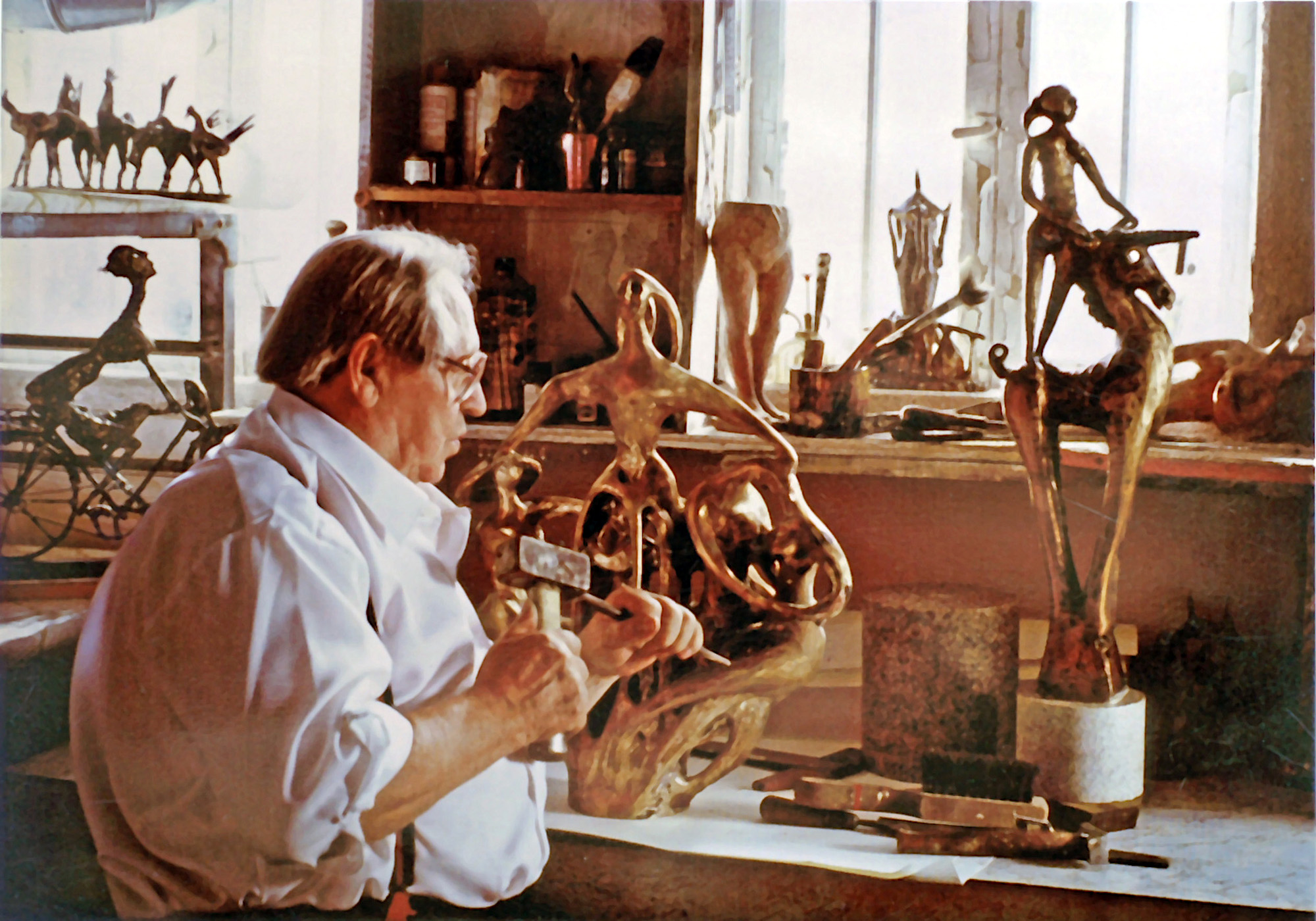
Since writing my essay on Avatar, I discovered another interesting example of his embedded imagery and hidden meaning in the form of a Stone Mountain scene. When I first saw the painting of Stone Mountain that is illustrated here, it seemed to be a rather quirky and uninteresting takeoff from his other paintings and drawings of the mountain, generally as seen from his back yard. However, something continued to intrigue me about it, particularly the strange trees and their placement. I remembered that in photographs that I had seen of the view of Stone Mountain from his back yard, trees did not block the view as they do in this painting. He added these trees. But, why? What idea was he trying to communicate?
The trees are aligned and oddly-spaced and easily reminded me of poles, of bars, of a barrier of some sort. They are barriers to Stone Mountain. But, why did he add barriers to the mountain? An important dream of Thomas’s that began soon after arriving in Atlanta was to be the sculptor for the Stone Mountain Civil War Memorial, and he had worked consistently for over 20 years to get the commission, but without success. To him, his efforts were always thwarted by political actions or unreasonable demands by the Commission members, individually and collectively. With that realization, I saw this painting, then, not as a landscape but rather as an illustration of an unachievable dream and a metaphor for the barriers that somehow must be overcome if we are to achieve our dreams.
I also recognized in this painting an artistic device I had not previously realized that he used. Thomas added objects to what would have been natural to startle the viewer and emphasize an idea. These objects, a group of trees in this painting, are just as startling and powerful as objects used by the best of the Magic Realists, such as Magritte; but differ from their objects, which usually are chosen because they would not naturally occur as they are depicted. Thomas’s use of these objects, such as these trees, might reasonably occur in nature, but they are distorted in their significance or juxtaposition to signal an idea. Knowing that he used these magic objects more subtly than the Magic Realists, one can begin to look for them in his other works as clues to hidden meanings.
Steffen Thomas sought to document American life as he imagined it and experienced it. This he did every day for 60 years, working incessantly to produce expressions that corresponded as closely to his ideas as he could possibly make them. He used all of his artistic skills and devices and his huge store of knowledge about history, psychology, sociology, philosophy, current events, and the arts, along with his keen observation and imagination, to observe and then link what he saw or imagined to his store of knowledge. Of course his interpretations were subjective. They could not have been otherwise because they are from his personal perspective, but they were his honest judgment of what he saw.
While some people may not like what they see in the art of Steffen Thomas, that may be because they did not like what was happening in America which he saw and experienced. He made art that represented everything that he experienced, and his documentation was true to his conceptualizations of his experience. What more can we expect of an artist?
Steffen Thomas, whether a discovery or rediscovery for the reader, is an artist whose works can be enjoyed for their beauty, but which can provide content for important learning about mankind.
— Anthony F. Janson, 2014

